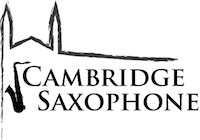Sonny Stitt was born in 1924 into a musical family. His biological father was a baritone singer and music professor and his mother was a piano teacher.
Sonny was given up for adoption in 1924 by his father. No one seems to know why Sonny was
given away, but the child was adopted by the Stitt family, who raised him in Saginaw. He later began calling himself “Sonny”. While in high school in Saginaw, Stitt played in the Len Francke Band, a local popular swing band.
In 1943, Stitt first met Charlie Parker, and as he often later recalled, the two men found that their styles had an extraordinary similarity that was partly coincidental and not merely due to Stitt’s emulation. Parker is alleged to have remarked, “Well, I’ll be damned, you sound just like me”, to which Stitt responded: “Well, I can’t help the way I sound. It’s the only way I know how to play.” Kenny Clarke remarked of Stitt’s approach: “Even if there had not been a Bird, there would have been a Sonny Stitt”.
Sitt played Alto Sax alongside Dexter Gordon and Gene Ammons in Billy Eckstien’s Big Band, but spent time in prison for selling drugs at the end of the 1940’s. Stitt switched to tenor saxophone as the comparisons to Charlie Parker started to affect him. His command of the Bebop language on both tenor and alto could only be said to be second to Parker, and on tenor he, (in my opinion) sounds better than the handful of recordings we have of Bird dabbling on the larger saxophone!
In 1957, Stitt recorded Sonny Side Up with Dizzy Gillespie and Sonny Rollins, it is still considered one of the finest ‘two tenor’ battle recordings out there. Stitt replaced Coltrane in Miles Davis’ band in 1960. Stitt was not a good fit. Some stories are that he and Miles didn’t see eye to eye musically, others say Stitt’s drinking annoyed Miles so much that he fired him.
Stitt recorded a number of memorable records with his friend and fellow saxophonist Gene Ammons, interrupted by Ammons’ own imprisonment for narcotics possession. The records recorded by these two saxophonists are regarded by many as some of both Ammons and Stitt’s best work, thus the Ammons/Stitt partnership went down in posterity as one of the best duelling partnerships in jazz, alongside Zoot Sims and Al Cohn, and Johnny Griffin with Eddie “Lockjaw” Davis. Stitt would venture into soul jazz, and he recorded with fellow tenor saxophonist Booker Ervin in 1964 on the Soul People album. Stitt also recorded with Duke Ellington alumnus Paul Gonsalves in 1963 for Impulse! on the Salt And Pepper album in 1963. Around that time he also appeared regularly at Ronnie Scott’sin London, a live 1964 encounter with Ronnie Scott, The Night Has A Thousand Eyes, eventually surfaced, and another in 1966 with resident guitarist Ernest Ranglin and British tenor saxophonist Dick Morrissey.
Stitt joined the all-star group Giants of Jazz (which also featured Art Blakey, Dizzy Gillespie, Thelonious Monk, Kai Winding and bassist Al McKibbon) and made albums for Atlantic, Concord and Emarcy. His last recordings were made in Japan. A rejuvenated Stitt also toured with Red Holloway in the late 1970s, who noted a marked improvement in his playing. In 1982, Stitt suffered a heart attack, and he died on July 22 in Washington, D.C..
